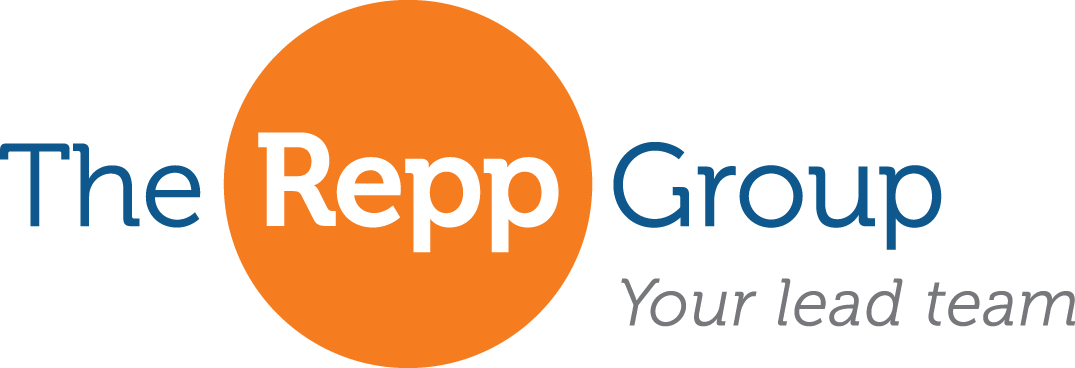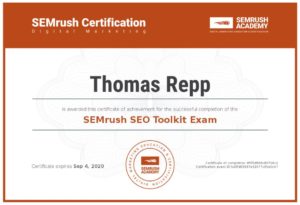 Let’s face it, your industrial business is in a crowded market. As industrial marketers you also face the reality your prospects are looking online for your products and solutions…almost exclusively.
Let’s face it, your industrial business is in a crowded market. As industrial marketers you also face the reality your prospects are looking online for your products and solutions…almost exclusively.
If your sales and marketing materials are not there to greet their queries in Google…you are not even in the crowded market to begin with.
To this end, SEO (search engine optimization) is now the most critical aspect of your most customer-facing marketing tool, your company’s website.
UNDERSTANDING USER INTENT AND BRAND VISIBILITY
Google and others crawl through your web pages and their algorithm matches your prospect’s user intent with the content that most meets their needs.
For example, if a user is searching for a Jimmy John’s restaurant, they are most likely looking for the closest location, not the Jimmy John’s home office in Campaign, Il. This is a pretty basic example of user intent.
I’m not going to bore you with all the rules in Google’s Search Quality Rating Guidelines, but here are just a few examples of how Google determines your prospects’ intent when searching.
This little dive into the weeds provides a bit of insight into how important it is to understand user intent and how Google ranks the content on your website to achieve the ultimate in online industrial marketing...100% brand visibility.
- When Google measures a query and its response, it categorizes your web page into 2 buckets. “Fully Meet” or “Fails to Meet” the user’s intent, based on 100’s of criteria in Google’s algorithm.
- Google’s algorithm also uses a concept called “Do-Know-Go” where a query is segmented into classifications to determine the results delivered to the SERP (search engine return page).
- DO
- When a user performs a “Do” query, the user wants to perform a specific action such as purchasing a product.
- Google also factors in “Device Action” and will generally categorize a query on a mobile device as “Do”, given how your prospect typically interacts with a smartphone.
- KNOW
- A “know” query is an informational query. This prospect just wants more information about a specific topic.
- GO
- “Go” queries are typically known brand queries, where the user is looking for a specific website.
- DO
- Does your web page have E-A-T, Expertise, Authoritativeness and Trustworthiness? Google ranks your page using 100’s of criteria to determine its E-A-T. Even though this does not have much to do with user intent, if our page ranks low for E-A-T, Google will not even return a page that otherwise might satisfy the web user’s intent.
I challenge you to download Google’s Search Quality Rating Guidelines and skim the 175 page document to better understand this critical task for industrial marketers. No need to read it, just skim it to get a feel for the challenges of online industrial marketing.
Enough of the geek stuff. You get the point.
Google does a great job of trying to figure out exactly what you are looking for. And they are getting better at it by the day.
I view Google’s focus on user intent a key advantage for the astute industrial marketer. Primarily because most industrial marketers do not produce content to satisfy Google’s “Fully Met” standard.
So, how do you turn this amazing technology into a competitive advantage for your industrial brand?
SIMPLE! Not easy…but simple
Your customers and prospects ask lots of questions about your products and services. Your website should answer every question your customer service department and sales group receives.
That’s it!
THEY ASK = YOU ANSWER (Thanks Marcus Sheridan)
Put another way, you need to be more helpful than any of your competitors.
By creating helpful content backed by your company’s experience and quality references you will get the job done, according to Google’s “rules of the road”.
By following this simple formula, we have achieved amazing results for our industrial client’s by satisfying all of Google’s check boxes in their algorithms for user intent.
I often talk about building a digital moat around my client’s businesses. The graphs below prove that we are achieving that lofty goal.
CREATING A DIGITAL MOAT AROUND YOUR INDUSTRIAL BUSINESS
 Above is a graph from SEMrush, a SEO research tool we use. This demonstrates the position of 60 keywords or topics for our client and compares these positions with 4 of our client’s most formidable competitors. The blue line demonstrates how often our client’s 60 keywords show up in #1 position in Google. 40% of the time our 60 keywords are in #1 position. That is, 24 of our keywords are in 1st position in the period from January 2019 to September 2021. The green, purple, rust and orange lines demonstrate our competitors’ positions. Not so good for our friendly competitors! The closest competitor is only 3% of brand visibility.
Above is a graph from SEMrush, a SEO research tool we use. This demonstrates the position of 60 keywords or topics for our client and compares these positions with 4 of our client’s most formidable competitors. The blue line demonstrates how often our client’s 60 keywords show up in #1 position in Google. 40% of the time our 60 keywords are in #1 position. That is, 24 of our keywords are in 1st position in the period from January 2019 to September 2021. The green, purple, rust and orange lines demonstrate our competitors’ positions. Not so good for our friendly competitors! The closest competitor is only 3% of brand visibility.

Above is a graph from SEMrush that demonstrates the position for the most generic keyword phrase (3 words) in our client’s industry. This would be like searching for “repair shop for European cars”. Notice the blue line. With a few fluctuations our client has remained in the #1 position since we started this campaign in January 2019. Their brand visibility for our client's top-level keyword is 100%. Their closest competitor for this specific keyword is 21%.

Above is a graph from SEMrush that demonstrates the position of a very specific keyword phrase (3 word phrase) for a service that our client & their competitors all provide. This would be like searching for “repair show that specializes in ZF 8-speed transmissions”. Notice the blue line. With a few fluctuations our client has remained in the #1 position since we started this campaign in January 2019. To be honest I am puzzled by the fact that our client’s largest competitor achieved #1 position for a short period of time. What did we do, what did our competitor do or did Google do to cause that fluctuation? This unique fluctuation demonstrates the fickleness of SEO and trying to keep up with Google.
I had a new client ask me recently, “Tom, I get the whole content marketing thing, be the best teacher, answer the most questions, etc. I get that. But, we have never created that kind of content. How do I get a content machine running to build that digital moat around my business that you often talk about?
Glad he asked. Here was my response.
BASIC OUTLINE OF CONTENT CREATION FOR 100% BRAND VISIBILITY
Here is my basic outline to achieve to 100% brand visibility. I would add, this has happened over 6 years with the examples above. It takes time, but with a steady eye on the prize and following this simple formula your industrial company can achieve the same results. As more and more of your industrial prospects and customers go online, you can’t afford not to adhere to these concepts.
- Select topics to write about by asking your employees closest to your customers, "What are the most common questions they get about your products, services, installations, etc.?"
- Run these topics by the owners' to make sure the topics align with their top-line growth expectations. At this time you can prioritize the topics by importance to the company.
- Run these topics through SEO research tools such as SEMrush.com. This research will further prioritize your list of topics and more importantly provides semantic insights into the best approach for each topic you are going to write about. In other words, what other words do web users use to search for a specific keyword or keyword phrase. SEO research will also let you know which topics will be the most difficult to rank for. This information provides a list of topics that you can most easily rank for...gathering some early wins for our client.
- I then ask my clients to submit a one page outline for each topic with the following information:
- Topic to write about & suggest a headline.
- Provide at least 3 URL references that my technical writer can reference.
- Which employee should be the author?
- Provide phone number & email address of the person that is suggesting this topic in case we need to follow up.
- Provide a purposeful benefit this topic will provide a web visitor.
- I submit this outline to our qualified technical writers. The basic information in the outline gives our technical writer enough information to write an authoritative and well referenced article.
- A blog article is written and approved by my client’s staff & the blog gets published on their website.
- Blog is promoted on social media, mostly LinkedIn for industrial.
- Overtime, we can see which topics gather the most interest and then we double down by creating helpful “pillar pages”. Pillar pages provide the following:
- Pillar pages are much longer that blog posts.
- We do our best to cover all aspects of a topic in the pillar pages and insert authoritative URL references, graphs, images, etc.
- We also provide links to and from already published blog posts on our website, further telling Google, “These guys really know their stuff.”
Allow me to digress briefly.
This particular client was just over 50% brand visibility with 40 keyword topics. We then added another 20 keyword topics and the visibility percentage dropped to around 40%. I firmly believe we will climb back up to 50% and beyond if we continue to produce content my client's prospects love and find useful.
My last blog provides a case study on how to achieve 75% visibility using video. Check it out.
THE BOTTOM LINE…
Provide great content that answers your prospects and customers most pressing questions/topics and don’t worry to much about Google & all that geekiness. Just know that it is there. It makes your content a little more accountable to Google's standards.
You too can achieve 100% brand visibility for most of your critical keywords and topics and construct a digital moat around your business that your competitors will find hard to penetrate.
Author:Tom Repp
A passionate marketer attempting to change the way industrial marketers leverage the web as a growth-oriented, lead generation machine. View all posts by Tom Repp




